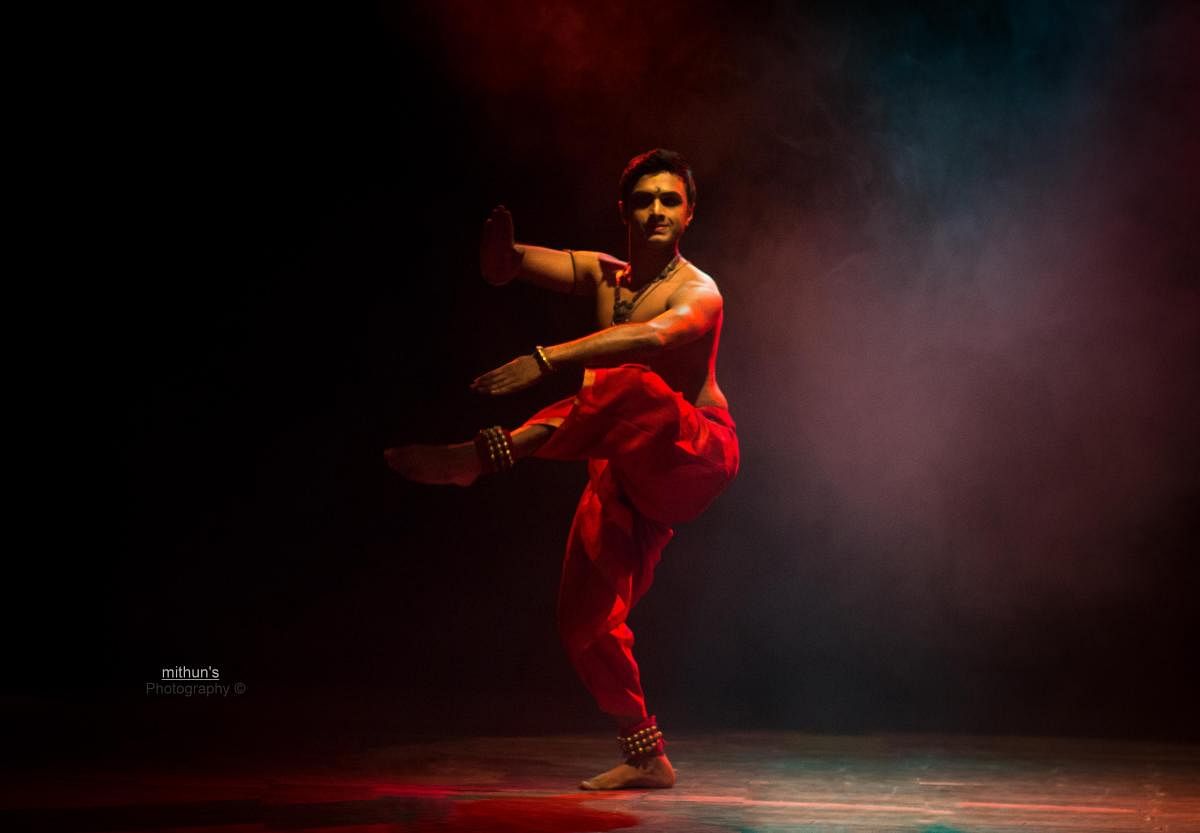
I currently feel like a student at a viva exam, sitting in front of four examiners,” told a part-nervy and part-curious Parshwanath Upadhye, the Bengaluru-based Bharatanatyam dancer, eagerly awaiting the responses from an esteemed panel of dancers and critics (comprising Alastair Macaulay, Maya Kulkarni, Rama Vaidyanathan and Hema Rajagopalan) after a virtual screening of his dance presentation Veeta Var Abha.
The observers and the public at large were witness to an excerpt of it as part of First Look, a three-day-long virtual open rehearsal series where dancers shared a glimpse of a piece/production that was (still in progress and) birthed during the pandemic. The event, which streamed live on Shaale.com, facilitated an important discussion among the dance fraternity, critics and the common man on the same forum.
The art fraternity, in many parts of the globe, has been quite receptive to the idea of open rehearsals. Artistes, before staging a performance for the public, are known to invite people from different walks of life to catch glimpses of their work. The subsequent feedback is viewed as a learning curve for the performers or an opportunity to lend a newer dimension to the presentation, even enhancing its impact. The results of this practice have been richly gratifying for both observers and artistes, regardless of the argument that the response to any work of art is subjective. Surprisingly enough, it hasn’t gained precedence in a land that claims to be a melting pot of cultures.
Classical dancers Dakshina Vaidyanathan Baghel, Shijith Nambiar, Parvathy Menon and Parshwanath had no reason to refuse when Akhila Krishnamurthy, the founder of the artiste-management and event curation firm Aalaap approached them with the idea to initiate the open-rehearsals trend here. “I thought it may be interesting to create a platform where people share their works in progress with a group of informed artistes, mentors and critics. The pandemic was also a time off from the deadline of a performance; so I thought artistes may have had the luxury of working on a piece with a sense of leisure,” Akhila felt.
Impressive variety
The dancers’ thematic choices lived up to expectations and boasted of impressive variety. Dakshina’s solo piece Svaasthyam, inspired by the pandemic, in the form of a thillana discussed the significance of yogam, dhyanam and pranayama in the context of our mental health. Shijith and Parvathy gave a new spin to the ksheera sagara mathana episode in an evocative presentation, while Parshwanath’s effort with his students was a seamless marriage of the Varkari Sampradaya and Bharatanatyam.
From Ramaa Bharadvaj’s fascinating textbook-like critique to Alastair Macaulay’s enthusiasm to absorb the intricate meaning beneath the dance movements and Maya Kulkarni’s ability to understand the interpretative quality of a piece (besides insights from critics Indira Kadambi, Chitra Sundaram, Aravinth Kumaraswamy) the dance connoisseur was left wanting for more. The impact of the pieces was partly dependent on the videography of a performance too; the choice of the right angles, shots, apt lighting and visual aesthetics proved crucial. Dakshina states “I had used two cameras for my performance and had to choose shots that best captured the essence of my performance.”
Educative value
The educative value of the series can’t be underestimated too, as it put an academic spotlight on the genesis of an idea, how it takes a concrete shape with choreography and can elicit a diverse range of reactions. ‘Constructive criticism’ can especially prove a touchy phrase when it involves a fraternity that holds its work extremely close to its heart. It was relieving and sportive of Parshwanath to say this in response to the fair bit of criticism he received from the observer panel, “I didn’t find their comments harsh because I think all artistes need it in some form. Otherwise, there’s every danger of art remaining stagnant. The inputs gave me many ideas to approach the presentation with newer zest.”
Hailing from a family that has a legacy in Bharatanatyam, Dakshina’s observations on why open rehearsals aren’t commonplace in India makes for interesting hearing too.
“As someone who has been learning dance from a very young age, being critiqued is not so much of a problem. It becomes an ego when someone who critiques you isn’t your guru or your well-wisher. When the latter does it, you don’t take it to heart and understand that they are doing it with the best of intentions. So, the credibility of the person critiquing your performance too matters. In this event, though I didn’t know what to expect, I went back being thoroughly enriched by the words of the panelists.”
First Look was a fine start to what should ideally be a regular feature in the Indian classical space in the times to come.